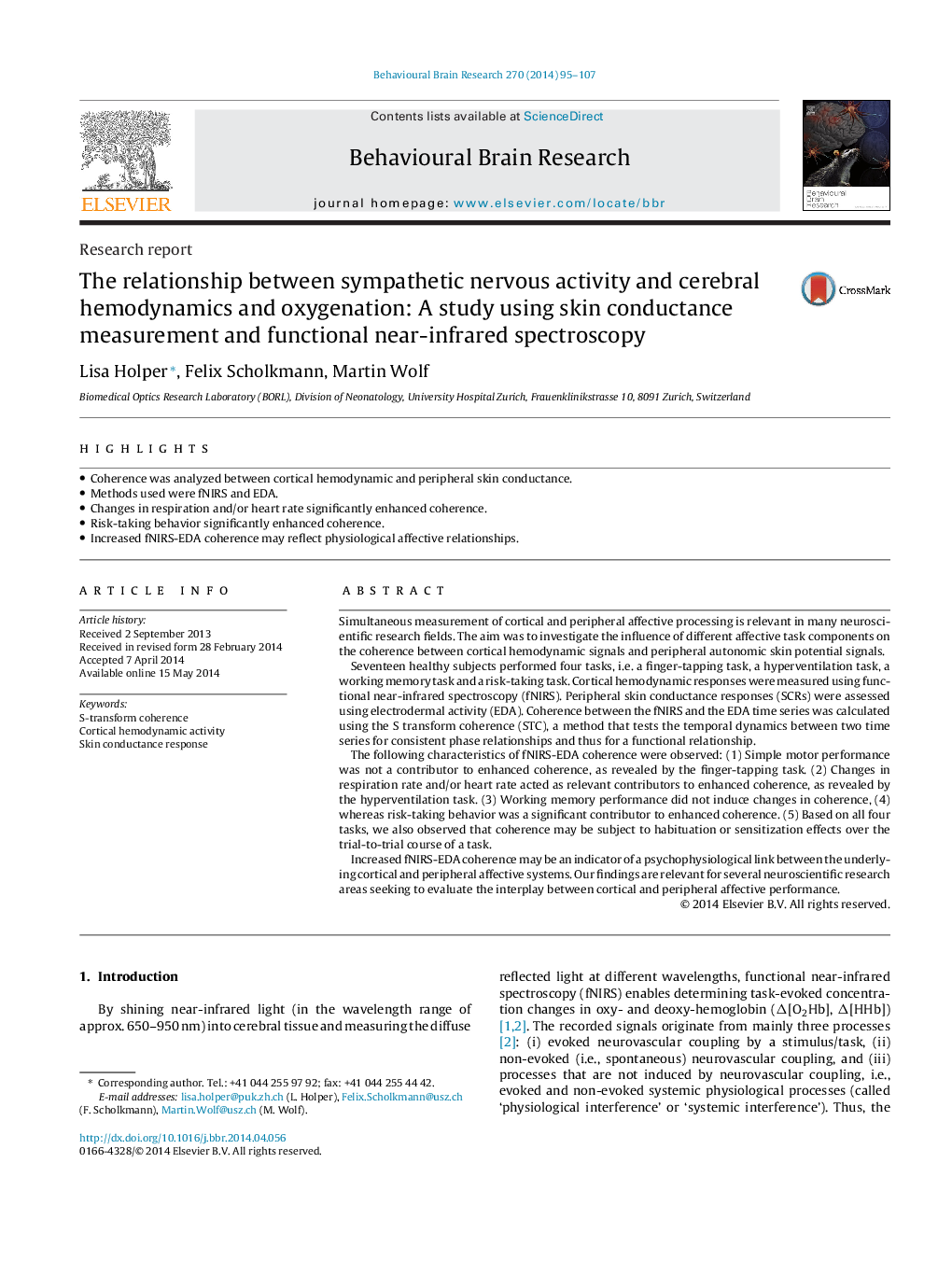| کد مقاله | کد نشریه | سال انتشار | مقاله انگلیسی | نسخه تمام متن |
|---|---|---|---|---|
| 6257905 | 1612962 | 2014 | 13 صفحه PDF | دانلود رایگان |
- Coherence was analyzed between cortical hemodynamic and peripheral skin conductance.
- Methods used were fNIRS and EDA.
- Changes in respiration and/or heart rate significantly enhanced coherence.
- Risk-taking behavior significantly enhanced coherence.
- Increased fNIRS-EDA coherence may reflect physiological affective relationships.
Simultaneous measurement of cortical and peripheral affective processing is relevant in many neuroscientific research fields. The aim was to investigate the influence of different affective task components on the coherence between cortical hemodynamic signals and peripheral autonomic skin potential signals.Seventeen healthy subjects performed four tasks, i.e. a finger-tapping task, a hyperventilation task, a working memory task and a risk-taking task. Cortical hemodynamic responses were measured using functional near-infrared spectroscopy (fNIRS). Peripheral skin conductance responses (SCRs) were assessed using electrodermal activity (EDA). Coherence between the fNIRS and the EDA time series was calculated using the S transform coherence (STC), a method that tests the temporal dynamics between two time series for consistent phase relationships and thus for a functional relationship.The following characteristics of fNIRS-EDA coherence were observed: (1) Simple motor performance was not a contributor to enhanced coherence, as revealed by the finger-tapping task. (2) Changes in respiration rate and/or heart rate acted as relevant contributors to enhanced coherence, as revealed by the hyperventilation task. (3) Working memory performance did not induce changes in coherence, (4) whereas risk-taking behavior was a significant contributor to enhanced coherence. (5) Based on all four tasks, we also observed that coherence may be subject to habituation or sensitization effects over the trial-to-trial course of a task.Increased fNIRS-EDA coherence may be an indicator of a psychophysiological link between the underlying cortical and peripheral affective systems. Our findings are relevant for several neuroscientific research areas seeking to evaluate the interplay between cortical and peripheral affective performance.
Journal: Behavioural Brain Research - Volume 270, 15 August 2014, Pages 95-107
